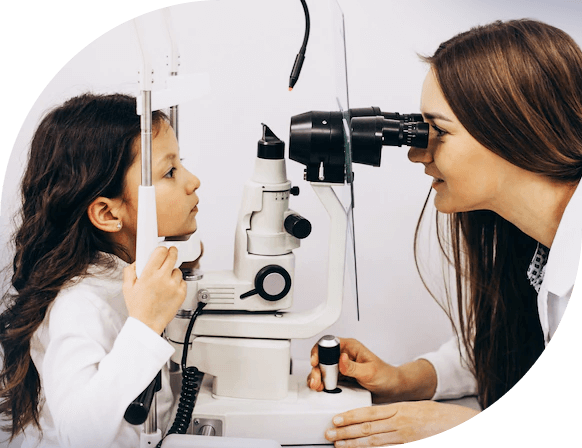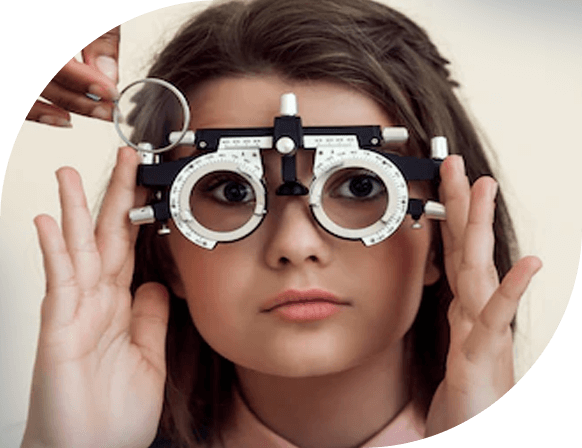Our Specialist Doctors Are Always Ready To Serve The Best For All your Vision Needs.
Our Team Of Specialist Doctors Are Always Ready To Serve The Best For All your Vision Needs.

-
Cataract
Cataract is the clouding of the normally clear lens of your eye Why do you get cataract? Advancing age is a primary reason for cataract. With age, protein of the lens turns opaque. Other causes of cataract are metabolic disorders such as diabetes, excessive exposure to sunlight, prolonged use of corticosteroid medications, statin medicines used to reduce cholesterol, hormone replacement therapy, previous eye surgery, lifestyle disorders like heavy alcohol consumption, smoking, injury or inflammation of the eye.
read more
-
Cornea
Cornea is the clear, dome-shaped surface that covers the front of the eye. It is responsible for more than 2/3rd of the eye’s focusing power. It receives its nourishment from the tears and aqueous humor that fills the chamber behind it and does not contain blood vessels to nourish or protect it against infection. To see well, all layers of the cornea must be free of any cloudy or opaque areas.

-
Glaucoma
The front of your eye is filled with a fluid that supplies nutrients to the eye and also maintains its shape. If the amount of fluid which pumps in and drains out is not the same due to blockage in the channels carrying the fluid out, pressure builds up. Glaucoma is a condition in which pressure inside the eye damages the optic nerve (the part of the eye that carries visual information to the brain). If this pressure persists without being diagnosed and treated, it can cause permanent loss of side vision & eventually possibly all sight. The amount of pressure that can cause damage varies from person to person.

-
Neuro-ophthalmology
Ophthalmic plastic surgery or ‘Oculoplasty’ is the branch of ophthalmology that deals with the diseases of the important structures around the eyes like eyelids, eyebrows, orbit and the tear system which are vital to the normal appearance and function of our eyes

-
Cataract
It is a problem with the retina in which macula, the part of retina needed for sharp, central vision, which helps you see fine details directly in front of you, is damaged. There are two types of AMD: dry AMD and neovascular AMD (nAMD). Generally speaking, dry AMD progresses quite slowly and is usually less severe than the neovascular type.

-
Cataract
Diabetes is the leading cause of blindness in working age worldwide. A recent study shows that over time, over 97% of type 1 diabetics will develop damage in their eyes. Diabetic retinopathy is damage to the back part of the eye from leaking blood vessels near the back of their eyes due to damage caused by abnormally high blood sugar levels.

-
Cataract
Cataract is the clouding of the normally clear lens of your eye Why do you get cataract? Advancing age is a primary reason for cataract. With age, protein of the lens turns opaque. Other causes of cataract are metabolic disorders such as diabetes..

-
Cornea
Cornea is the clear, dome-shaped surface that covers the front of the eye. It is responsible for more than 2/3rd of the eye’s focusing power. It receives its nourishment from the tears and aqueous humor that fills the chamber behind it and does not contain blood vessels to nourish or protect it against infection..

-
Glaqucoma
The front of your eye is filled with a fluid that supplies nutrients to the eye and also maintains its shape. If the amount of fluid which pumps in and drains out is not the same due to blockage in the channels carrying the fluid out, pressure builds up. Glaucoma is a condition in which pressure inside the eye damages the optic nerve.

-
Neuro-opthalmology
Ophthalmic plastic surgery or ‘Oculoplasty’ is the branch of ophthalmology that deals with the diseases of the important structures around the eyes like eyelids, eyebrows, orbit and the tear system which are vital to the normal appearance and function of our eyes

-
Orthoptics
It is a problem with the retina in which macula, the part of retina needed for sharp, central vision, which helps you see fine details directly in front of you, is damaged. There are two types of AMD: dry AMD and neovascular AMD (nAMD). Generally speaking, dry AMD progresses quite slowly and is usually less severe than the neovascular type.

-
Oculoplasty & Asthetics
Diabetes is the leading cause of blindness in working age worldwide. A recent study shows that over time, over 97% of type 1 diabetics will develop damage in their eyes. Diabetic retinopathy is damage to the back part of the eye from leaking blood vessels near the back of their eyes due to damage caused by abnormally high blood sugar levels.





